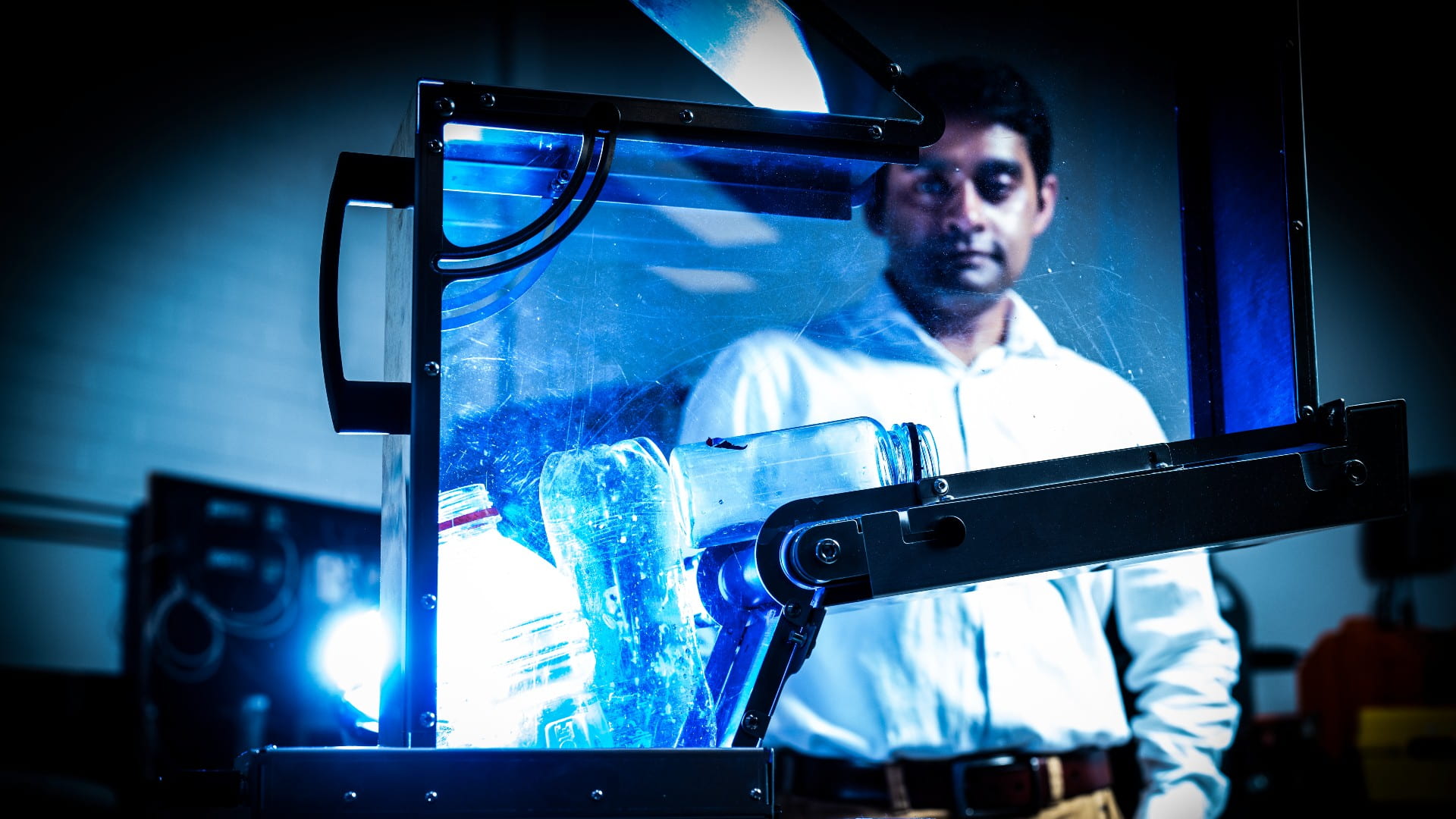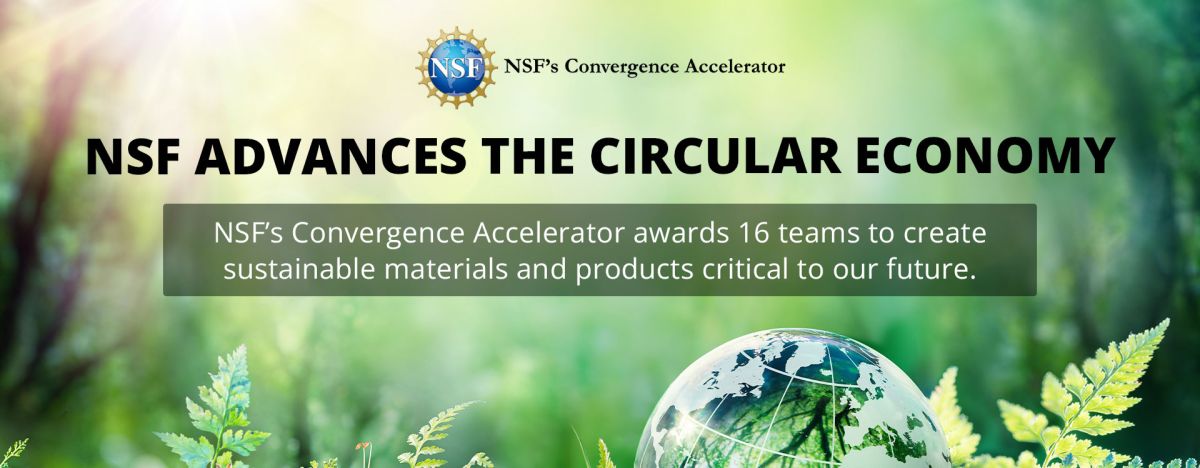As part of the National Science Foundation (NSF)’s Convergence Accelerator program, 16 multidisciplinary teams will receive $11.5 million in funding to advance the circular economy. Australia’s national science agency, Commonwealth Scientific and Industrial Research Organisation (CSIRO), is also contributing and will fund local researchers to participate in two U.S. projects. One of the undertakings aims to use plastic waste to additively manufacture sustainable furnished homes.
Titled “Designing for Circular Economies – Creating Impact from Local Plastic Waste Using Off-Grid Containerized 3D Printers & Practice-Based Learning,” the project convenes academia, educators, nonprofits, and industry experts to develop a deployable, net-zero-footprint manufacturing system that enables lay users to design and manufacture goods from plastic waste, resulting in sustainable infrastructure with significant socio-economic impact.
According to the project details, the system includes an interactive design tool and sustainability dashboard to help users better quantify the environmental impacts and economic opportunities of redirecting waste streams, initially designated for a landfill, into feedstock for 3D printing goods in a circular model.
Sustainability boost
Led by re:3D, a spinout of NASA Johnson Space Center association Engineers Without Borders, the team will leverage the company’s expertise in 3D printing directly from plastic waste. Known for its large-scale, industrial, and affordable (under $9K) Gigabot 3D printers, re:3D wants to save the Earth by building products from trash. The company’s open-source printers can grind, dry, and feed plastic waste into the system.
In addition, the collaborative effort will also work with Austin Habitat for Humanity to better understand waste generated from their operations, and the product needs of low-income homeowners, among other variables. Other participants include the University of Texas at Austin, which will provide expertise in engineering design and Life Cycle Value Analysis (LCA); the Western Sydney University and its experience in the materials science of 3D printing with recyclables; and the University of Wollongong (UOW) ‘s know-how in net-zero structure guidance.
For years, the UOW has powered 3D printing research, driving innovation in healthcare, bioprinting, and even surfing. This new project will find the UOW team focused on building structures from plastic waste. UOW researcher and lecturer in Structural Engineering at the School of Civil, Mining, Environmental, and Architectural Engineering, Aziz Ahmed, will lead the team.
 Dr. Aziz Ahmed from the University of Wollongong (UOW). Image courtesy of the University of Wollongong.
Dr. Aziz Ahmed from the University of Wollongong (UOW). Image courtesy of the University of Wollongong.Discussing this unique opportunity, Ahmed said: “Imagine a world that supports the sustainable manufacturing of furnished homes using local plastic waste while not only diverting garbage from landfills but also creating jobs and training under-represented talent. What if this opportunity could be scaled globally in both rural and urban areas in a modular package?”
Tackling challenges
Plastic waste pollution is a prevalent environmental issue, with a recycling rate of only 10% of all the worldwide plastic ever produced. Moreover, of the seven billion tonnes of plastic waste generated globally, the majority is lost to the environment or sometimes shipped thousands of miles to locations where it is burned or dumped.
According to the NSF, approaches that consider a circular economy are essential for the sustainable design of materials for every aspect of life and work and are intended to capture the entire life cycle through their use in applications such as the built environment, semiconductors, polymers, and textiles.
NSF Assistant Director for Technology, Innovation, and Partnerships Erwin Gianchandani says that the production and use of materials today are not sustainable for our planet and human health. Instead, “creating environmentally and economically sustainable materials and products” is critical to our future. Multi-tiered impactful solutions, like re:3D’s, will advance the circular design of materials and manufacturing processes to reduce pollution and waste.
At the heart of 3D printing construction is sustainability, lower costs, and quicker building times. A collaborative solution like this one provides an opportunity to collaborate and make an impact beyond the scope of one entity alone.
This project is part of the Convergence Accelerator program’s “Track I,” focusing on sustainable materials for global challenges. Over the next nine months, teams will identify new team members and partners to support solution sustainability and participate in the Convergence Accelerator’s hands-on innovation curriculum, designed to guide the teams in transforming their initial idea into a prototype. The curriculum includes fundamentals in human-centered design; team science; use-inspired research; early-stage prototyping; communications, storytelling, and pitching.
At the end of the first phase, the groups will participate in a formal Phase 2 proposal and pitch. Then, over 24 months, selected Phase 2 teams will continue developing a solution and have to create a sustainability plan.
Subscribe to Our Email Newsletter
Stay up-to-date on all the latest news from the 3D printing industry and receive information and offers from third party vendors.
You May Also Like
Precision at the Microscale: UK Researchers Advance Medical Devices with BMF’s 3D Printing Tech
University of Nottingham researchers are using Boston Micro Fabrication‘s (BMF) 3D printing technology to develop medical devices that improve compatibility with human tissue. Funded by a UK grant, this project...
3D Printing Webinar and Event Roundup: April 21, 2024
It’s another busy week of webinars and events, starting with Hannover Messe in Germany and continuing with Metalcasting Congress, Chinaplas, TechBlick’s Innovation Festival, and more. Stratasys continues its advanced training...
3D Printing Webinar and Event Roundup: March 17, 2024
It’s another busy week of webinars and events, including SALMED 2024 and AM Forum in Berlin. Stratasys continues its in-person training and is offering two webinars, ASTM is holding a...
3D Printed Micro Antenna is 15% Smaller and 6X Lighter
Horizon Microtechnologies has achieved success in creating a high-frequency D-Band horn antenna through micro 3D printing. However, this achievement did not rely solely on 3D printing; it involved a combination...






























